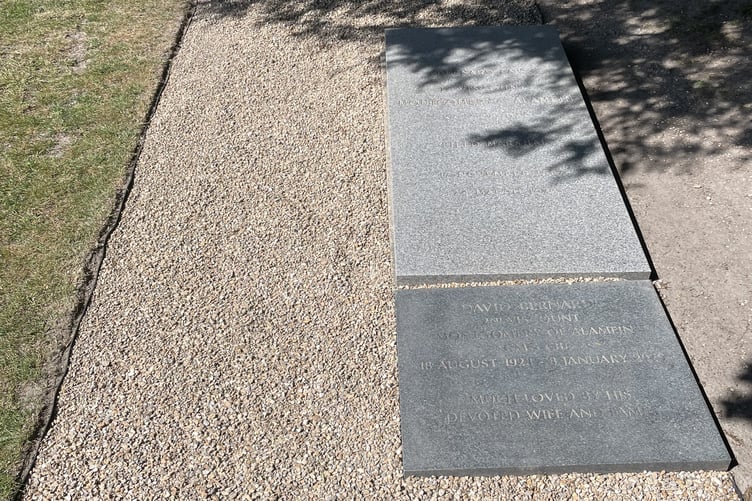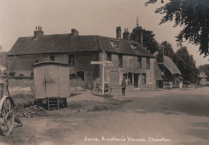As the nation prepares to mark the 80th anniversary of Victory in Europe Day on May 8, one Hampshire village will already have honoured the occasion.
In fact, Binsted, near Alton, can lay a genuine claim to leading the country’s VE Day commemorations. This peaceful rural community has a unique and enduring link to the Second World War: it is the final resting place of Field Marshal Bernard Law Montgomery, one of Britain’s most distinguished military leaders.
Known to many simply as ‘Monty’, Montgomery was instrumental in securing Allied victory in Europe. His modest grave lies in the churchyard of Holy Cross Church in Binsted, far removed from the global stage he once commanded, but symbolic of his connection to the area.

This year, Binsted will commemorate a moment of major historic significance that actually predates VE Day. On May 4, 1945, Montgomery accepted the unconditional surrender of German forces in Holland, north-west Germany (including all islands in Denmark), and all naval units in those areas. The surrender took place at Luneburg Heath, south of Hamburg, and effectively ended the war in northwest Europe, days before the official declaration of peace across the continent.
To mark the 80th anniversary of that milestone, Binsted will host two commemorative events on Sunday, May 4. At 11am, a Benefice Commemorative Service will take place at Holy Cross Church, including wreath-laying at Montgomery’s grave. Then, at noon, the village will celebrate with a 1940s-themed street party at the Wickham Institute, where period dress is encouraged, and the atmosphere will echo the joy of a nation at peace.
-Murray-Adams-Littleknown-as-Bob--Pictured-with-Field-Marshall-Montg.jpeg?width=752&height=500&crop=752:500)
These events are more than just a local tribute—they reflect Binsted’s vital place in Britain’s wartime legacy. For those who remember or have studied the conflict, Montgomery remains a towering figure. He led the British Eighth Army to a crucial victory at the Second Battle of El Alamein in 1942, a turning point in the North African campaign that marked a shift in momentum against the Axis powers.
In 1944, he played a central role in the planning and execution of the Normandy landings, commanding all Allied ground forces during the initial stages of Operation Overlord. While his leadership style was sometimes criticised as rigid, and his relationships with American generals occasionally strained, his results spoke for themselves. Preparation, discipline, and maintaining morale were his hallmarks.
Churchill once described him as “unbeatable in defeat, unbearable in victory,” a nod to Monty’s prickly, uncompromising character. But his military success was indisputable, and his status as one of the war’s most effective commanders remains firmly intact.
After the war, Montgomery made his home in the Binsted area. He took up residence at Isington Mill, which at the time was a dilapidated structure. Over the years, he restored the mill house and its two oasts, converting them into a comfortable country retreat. He would live there for nearly three decades—from 1947 until his death in 1976 at the age of 88.
Despite his fame and the honour of being made 1st Viscount Montgomery of Alamein, he chose to be buried in the quiet churchyard at Binsted, rather than in Westminster Abbey, where many other great national figures are laid to rest. It was a personal decision, perhaps reflecting his desire for a more grounded memorial far from pomp and ceremony.
Now, 80 years after the surrender at Luneburg Heath, Binsted will mark the occasion with appropriate respect. The events on May 4 offer a chance not only to remember Montgomery and those who served under him, but also to reflect on the significance of that moment in history.
In doing so, Binsted continues to play its part in preserving the memory of the Second World War, through a thoughtful recognition of its unique place in the story.





Comments
This article has no comments yet. Be the first to leave a comment.